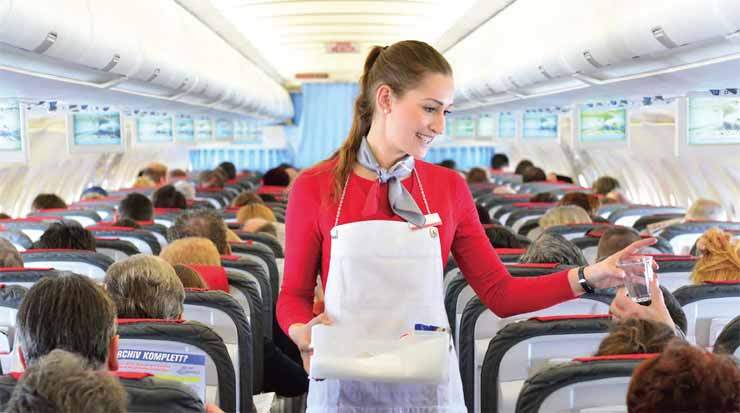Together with its partners, that includes 197 interline relationships and 49 codeshare deals, Etihad Airways now offers a combined passenger and cargo network of nearly 600 destinations with over 25,200 flights per week.
All in all, in 2015, some 17.4 million travellers flew with Etihad Airways – up 17 percent year-on-year – on 97,400 flights which covered 467 million kilometres.
Theoretically, this means that the airline could have circled the Earth not less than 11,653 times. Underscoring the success of the company’s strategy, partnerships delivered more than five million passengers, a pronounced surge of 43 percent in just one year.
Taking advantage of its partnerships, the Abu Dhabi-based carrier has consolidated its presence on long-haul markets in recent years, and after growing to a fleet size of 121 aircraft at the end of 2015, nine percent more than in 2014, Etihad Airways will now support the next phase of its global expansion with the receipt of 10 deliveries over the coming months.
Long-haul expansion to key locations, such as London’s Heathrow Airport, Mumbai, Melbourne, Düsseldorf, Perth, Shanghai, Istanbul, and Johannesburg is complemented by increased frequencies on 16 existing routes across the world with these including destinations mostly in the Middle East, Asia and Australia.
This year will see the inauguration of the carrier’s third daily Airbus A380 service to Heathrow Airport, alongside the new A380 destinations of Mumbai and Melbourne, while the Boeing B787 will commence services to Dusseldorf, Shanghai, Istanbul, Johannesburg and Perth.
FAR AND WIDE
In fact Australasia remains a key focus for the Gulf heavyweights with Qatar Airways also competing for a larger slice of the pie, notably with the upcoming launch of a new Doha – Auckland service, which, will set new records for both distance and time to become the longest nonstop service in the world, eclipsing Emirates’ aforementioned flight.
With the evolution of fuel-efficient technology and current oil prices, Qatar Airways’ management expects to witness a new era of ultra-long-haul aviation.
A new generation of aircraft is also helping to make longer flights more efficient, and both Boeing and Airbus are working on extended-range models, such as the Airbus A350-900ULR and Boeing 777-8 that will enter service in the next five years.
Yet, such super-long nonstop flights are not new.
A decade ago, these types of routes seemed to be emerging as a key trend, as it was pinpointed from Qatar Airways’ side, further reminding that the soaring price of fuel in 2009 and 2010, coupled with the global economic crisis, reduced the demand for such flights, making them simply unsustainable.
Qatar Airways’ leadership maintains the view that a direct air route will always be preferable, particularly for the business travel community, that perceives ultra-long haul as a great opportunity for productive working hours.
As the airline continues to explore new geographical areas, demand remains the primary factor.
Qatar Airways will continue to seek to leverage its Doha hub and global network to connect customers to these ultra-long haul flights, in view of the fact that technology is now there to make these services more efficient.
Qatar Airways management is straightforward in its strategy as is looking at where it makes business sense to operate.
To this end, this year will see the launch of 14 new destinations, including five European cities.
Over the years, Europe proved to be a very important and strategic market for Qatar Airways’ growth and expansion, driven by strong demand from the Gulf states.
Consequently, the carrier currently operates to 38 locations on the continent, to many with multiple daily flights, including to cities such as London, Paris, Madrid and Barcelona.
The management strongly believes that the one-stop transfer options available at Hamad International Airport will make these routes even more successful. Boosting passenger movements via Doha is in line with forecasts that expect traffic at Qatar’s main entry point to surge from the current 30 million to 50 million passengers per annum by 2018.
On one hand, the focus remains on key business and leisure destinations, while on the other hand, establishing connections with previously underserved markets is also a strong pillar of Qatar Airways’ strategy.
The addition of new destinations is in parallel with the enhancement of the fleet. It is noteworthy that on average the airline receives a new aircraft once every 10 days, and the average age of the fleet is as low as five years.
All these expansion plans underscore the Gulf airlines’ ambition to link the region with wider markets and take passengers to more places than ever before.









